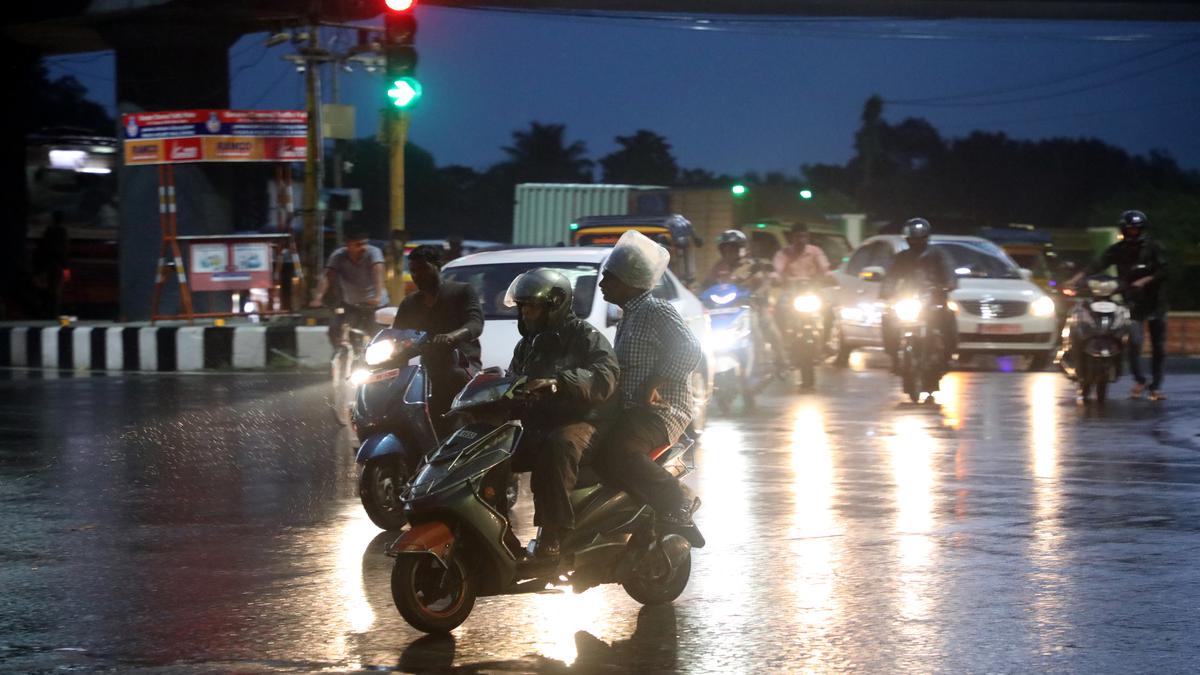
Water release from Poondi increased after heavy rain in Tiruvallur and nearby areas
The Hindu
Heavy rain in Poondi led to increased water discharge from the reservoir. Water Resources Dept. diverted 550 cusecs to Cholavaram reservoir. City's major reservoirs have 72.4% of storage capacity. Chennai, Kancheepuram, Tiruvallur, Tirunelveli recorded surplus rain this season. Warm weather during day followed by evening thunderstorms is seasonal pattern in Sept.
Heavy rain around Poondi in Tiruvallur led to an increase in water discharge from the reservoir on Wednesday morning.
The rain gauge at the reservoir recorded a rainfall of 10 cm, the highest amount registered in the State during the past 24 hours ending 8.30 a.m. on Wednesday. It may be recalled that two floodgates of the prime reservoir, which stored drinking water for the city, were opened on Monday due to heavy inflow from catchment areas in and around the Kosasthalaiyar.
Officials of the Water Resources Department (WRD) said the water release from Poondi reservoir was increased from 1,000 cubic feet per second (cusecs) to 2,500 cusecs on Wednesday morning. This had to be done as about 3,000 cusecs of rainwater flowed into the waterbody. Closing the floodgates would depend on the decrease in rain and inflow. The reservoir is now brimming with water as its level has touched 34.25 feet against the full level of 35 feet, having 90% of its storage capacity.
Instead of draining water into the sea, the department is diverting 550 cusecs from Poondi to Cholavaram reservoir through the Upper Supply Channel. Water is being let into the Link Canal to step up storage in other reservoirs in Red Hills and Chembarambakkam, officials said.
The city’s major reservoirs have nearly 72.4% of their storage capacity, almost a month ahead of the northeast monsoon’s onset, which contributes a major share of rainfall in the region. The existing resources will be enough to serve the city for another year. The water released into the Kosasthalaiyar has reached Thirukandalam, located 25 km from Poondi and will help recharge groundwater through check dams in the region, officials added.
Meanwhile, the Regional Meteorological Centre, Chennai, has forecast scattered rain to continue over Tamil Nadu, and it may be heavy in districts along Western Ghats till the end of the month.
S. Balachandran, Additional Director General of Meteorology, RMC, said a cyclonic circulation that lies over southwest Bay of Bengal, off the Tamil Nadu coast, triggered wet weather over parts of the State. Heavy showers are likely in one or two places of districts along Western Ghats like the Nilgiris, Coimbatore, and Theni till Friday.

Under the NBS, newborns are screened for communication disorders before they are discharged from the hospital. For this, AIISH has collaborated with several hospitals to conduct screening which is performed to detect hearing impairment and other developmental disabilities that can affect speech and language development. The screening has been helping in early intervention for those identified with the disorders, as any delay in the identification poses risk and affects successful management of children with hearing loss, according to AIISH.












